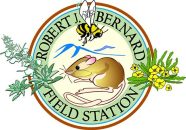Perkins, Marc C. (1998)
Lizard Energy Budgets: A Synthesis of Field Temperature Measurements with Digestion Data in the Western Fence Lizard, Sceloporus occidentalis.
Bachelor of Science, Harvey Mudd College, Biology.
Advisor: Stephen Adolph.
Ectotherms’ energy budgets are complicated by the fact that environmental temperature affects both energy intake and energy expenditure. Many ectotherms, including lizards, have behavioral control over their body temperature, and thus it is possible that ectotherm thermoregulatory strategies could vary in their energetic benefits. Once the temperature dependence of consumption rate is known, it will be possible to apply that knowledge to field temperature measurements and determine the implications of digestive rate’s temperature dependence on year-round energy intake (Huey and Stevenson, 1979). One very useful way to determine the temperatures available to ectotherms in the wild is to measure operative temperatures (Bakken, 1989; Hertz et al., 1993). Operative temperature data can be used to determine a lizard’s thermal opportunity, which is the amount of time a lizard can thermoregulate to its preferred body temperature. In this study I measured the temperature dependence of digestion rate of the lizard S. occidentalis. In order to convert this measure into energy intake I measured the lizard’s digestive efficiency as well as food energy content. I have also measured the thermal opportunity available to lizards in the field from September 1997 to April 1998.
